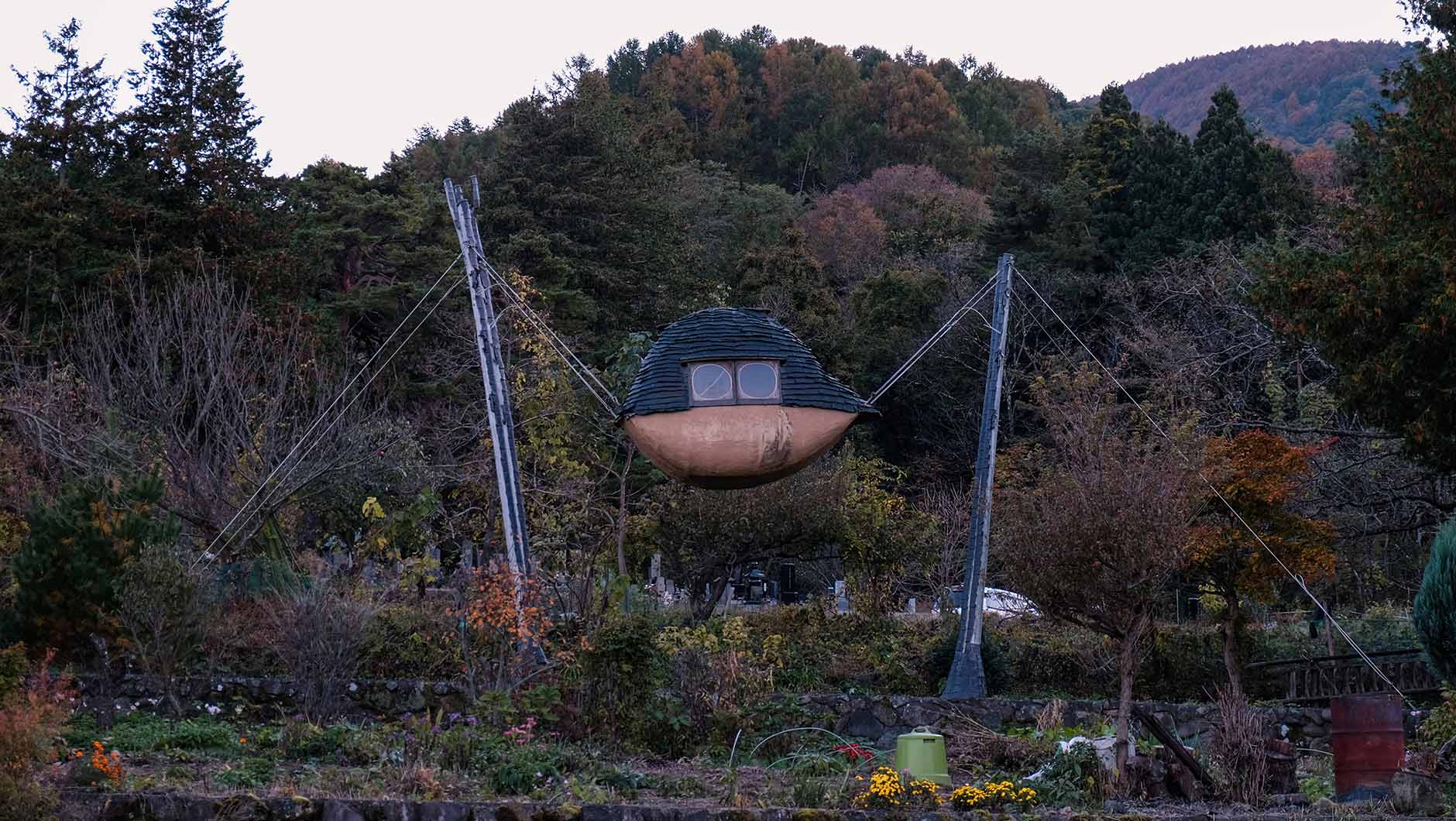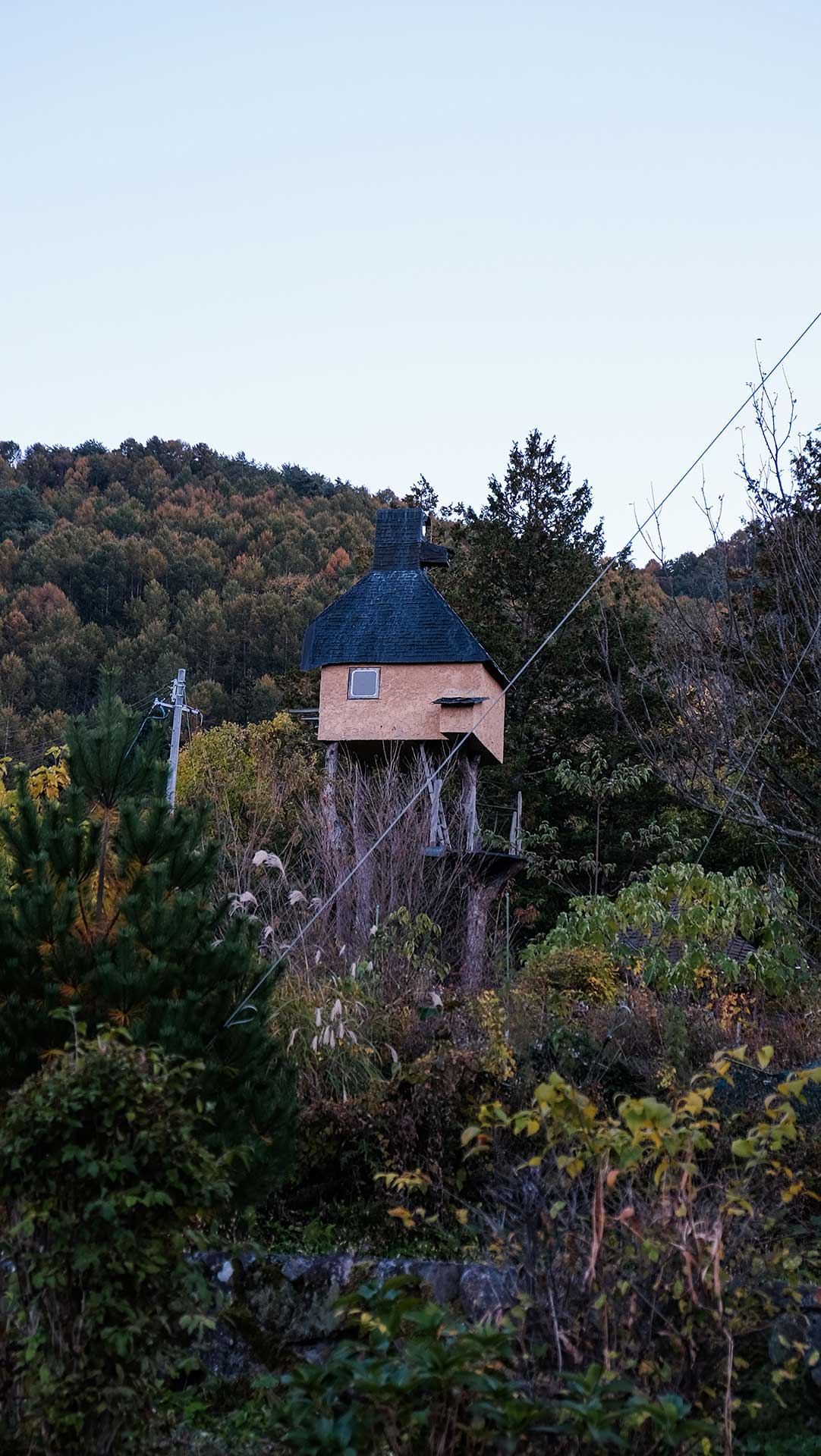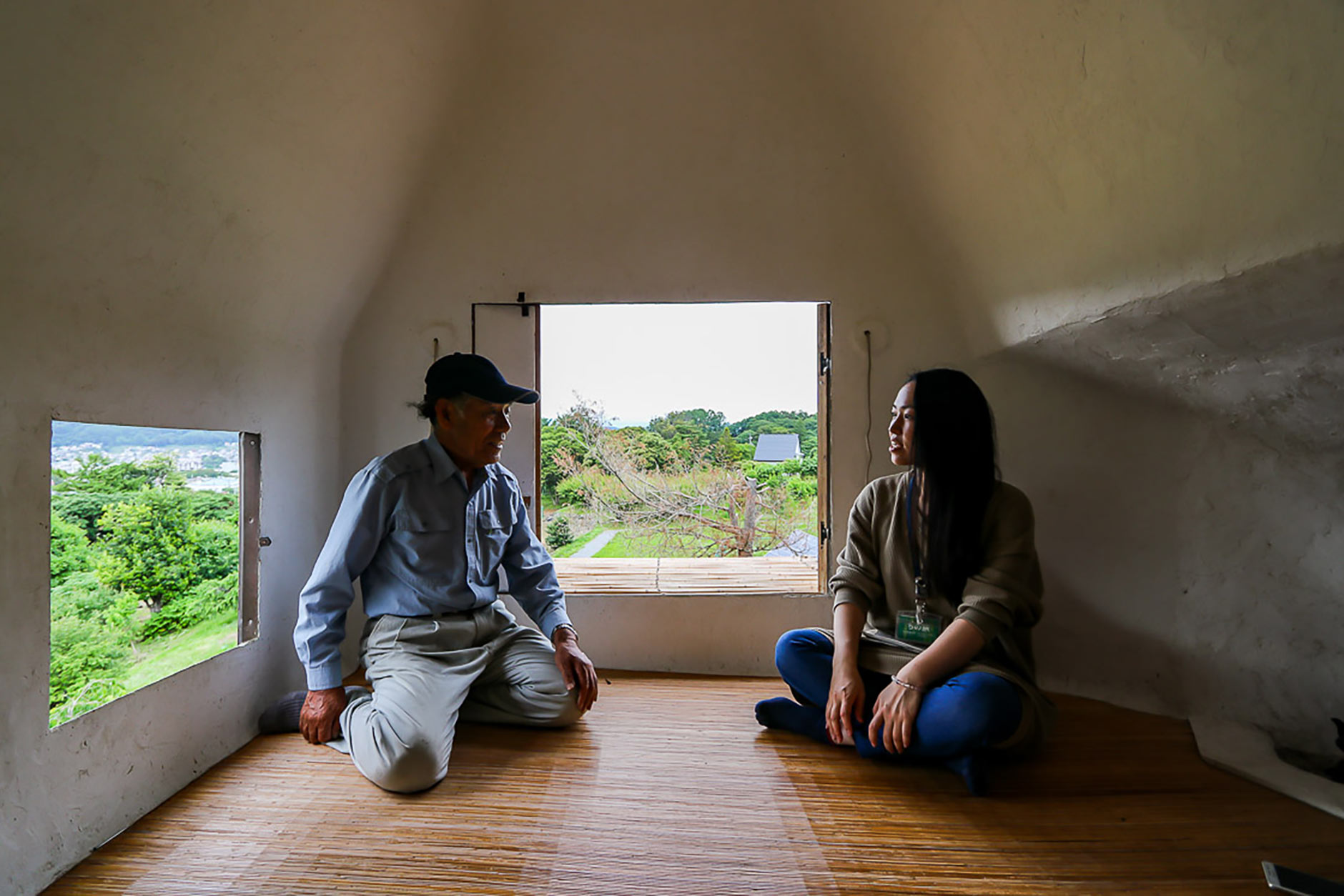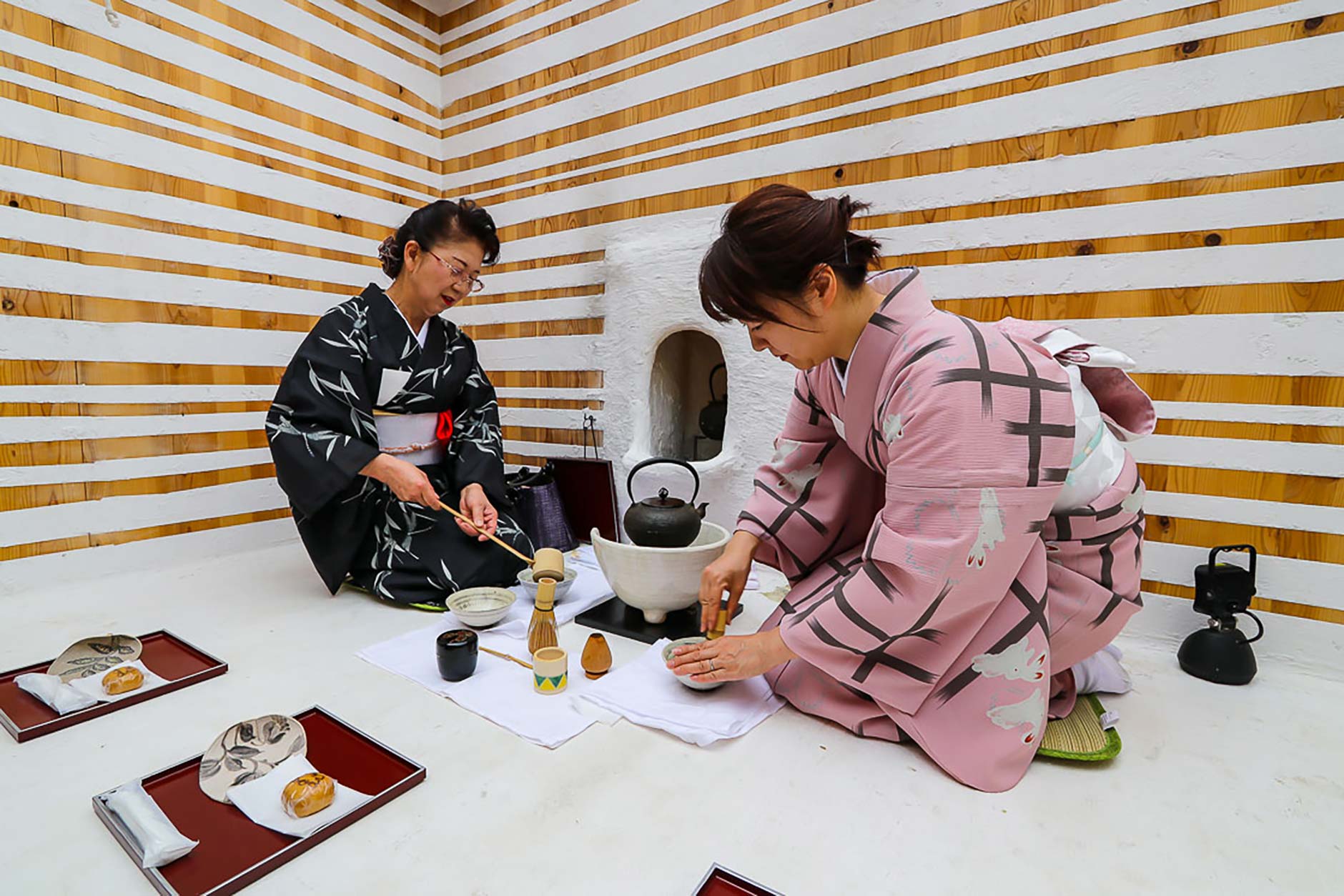Welcome to the Wackiest Tea House in Japan
oted in the top 10 most precarious buildings by Time magazine, the “tea house built too high” known as Takasugi-an is a Dr Seuss-esque tea house built overlooking the surrounding mountain range of Chino, Nagano. It sounds like the place for the perfect cup of tea – if only it didn’t sway so easily in the wind!
Actually there are a total of three impractical tree houses in Chino each uniquely unusual – Takasugi-an, Hikusugi-an and the Flying Mud Boat.
The most famous of the three, Takasugi-an, looks dainty and fragile as it expertly balances off the ground on top of two slender looking chestnut tree trunks. In contrast, its neighbour Hikusugi-an which literally translates to “the too-low tea house” is so hysterically close to the ground it looks more like a tent rather than a tea house. Last but not least, the death defying Flying Mud Boat located towards the front uses only cables and is suspend in midair like a hovering wooden space ship.
That’s just the kind of mind bending thinking that led to the creation of these impressive funky structures by architect Fujimori Terunobu. They are part of an art installation exploring unconventional ways to create small spaces that challenges traditional design and ideas of comfort.
So how can you step inside these quirky spaces? Unfortunately there’s not a lot of information online but here’s everything you need to know about visiting this off-the-grid attraction.
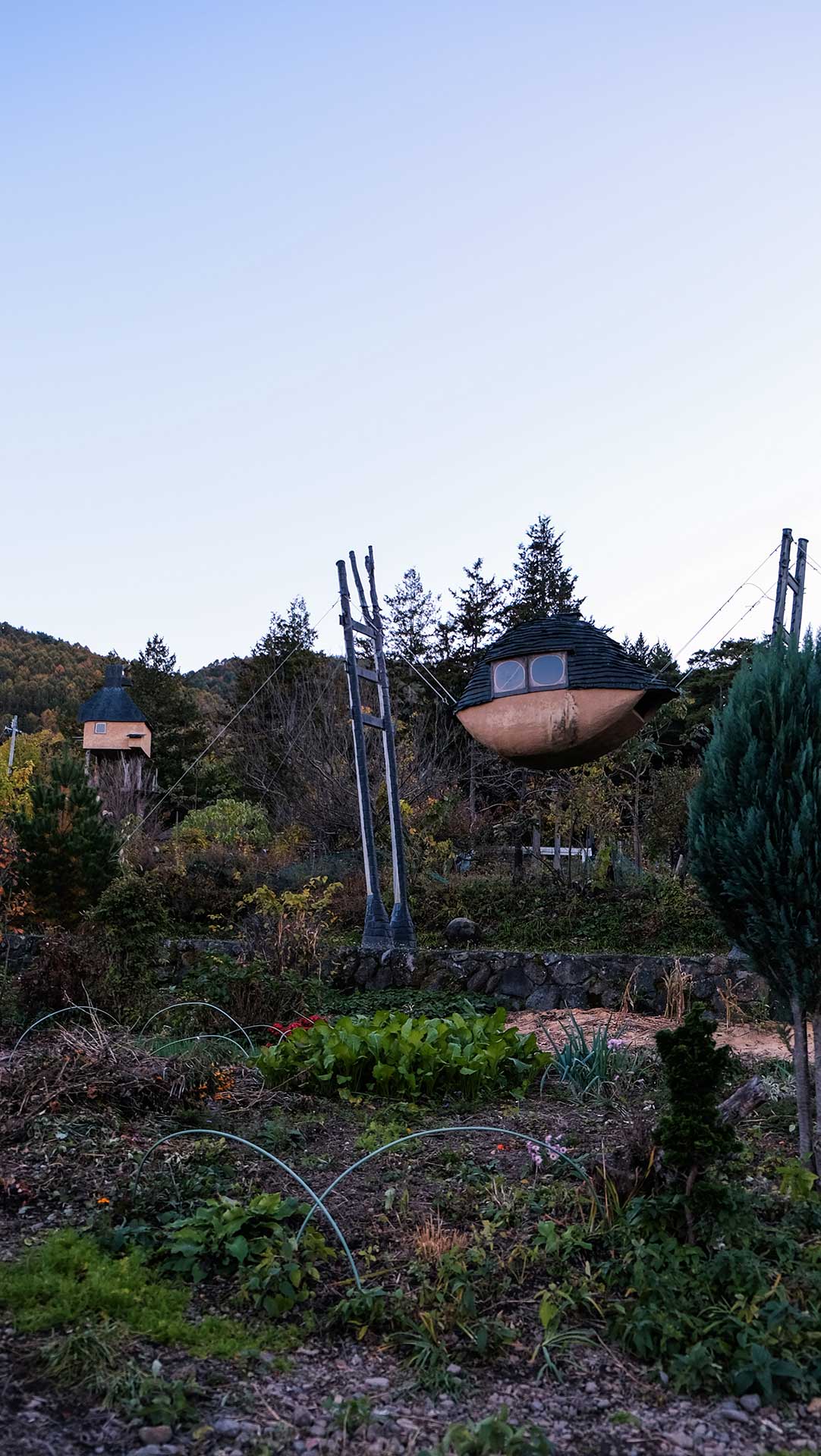
Who is Fujimori Terunobu?
o understand why these tea houses exist, we must first understand the man who created them.
Fujimori grew up in Chino. In fact, the site where the tea houses are built on is his family owned plot of land, which overlooks his first work “Jinchōkan Moriya Historical Museum” – a historical museum that showcases Chino’s neighbouring city Suwa’s ancient religious roots and connection with the prestigious Moriya family clan. Bonus fact: If you are a fan of the popular anime film “Your Name,” Suwa is heavily referenced in the film’s setting through Mitsuha’s character.
His approach to architecture is defined as being eccentric and humorous due of his experimental use of natural materials and his subversion of traditional tea house building techniques. He also mentions that his works are intentionally medieval in style, wanting to go back to a time before the Bronze Age to create ‘an international style in the Neolithic Age.” Simply put, imagine a Flintstones-esque Stone Age with a Japanese sensibility to design and the imagination of a Studio Ghibli film. This video shares more about his intentions behind Takasugi-an and The Flying Mud Boat.
Besides architecture, Fujimori is quite famous in Japan as a cultural commentator, author and television host and represented Japan in the 2006 Venice Biennale.
What to expect inside
esides the general descriptions found in many online art articles, it was quite hard to find any information on what these structures actually look like on the inside.
Although we weren’t able to go inside ourselves – we talk about this later on – from our research we were able to gather some sense of what each interior space has to offer.
Takasugi-an’s incredibly tiny, measuring only 2.2 meters on each side but this relaxing fort-like interior with attachable ladder to climb to the entrance is the treehouse happy childhood dreams are made of. Inside, the use of nature such as light reflecting from the gold leaf sky line during the day and moonlight shining from the bamboo shutters makes it a soothing experience to be inside. The Flying Mud Boat tea house is like a cozy wooden cabin ready to fly off on a Treasure Island inspired adventure and though we aren’t sure why Hikusugi-an’s tea house roof can completely open like a Babushka doll, the interior’s use of white and wooden paneling sure is hypnotic when the roof is closed.
All three works explore Fujimori’s experiment with tiny spaces. Whilst planning, he mentions he wasn’t interested in creating the smallest space possible, rather prioritising the sense of comfort that small spaces offer.
The structures also break conventions in Japanese tea house design and traditional architecture as well. The Flying Mud Boat’s suspension system is so unique it’s the only suspension structure in the world to run cables under its base foundation like a hammock. Takasugi-an and Hikusugi-an’s tea house designs both offer views of the outside world as oppose to traditional Japanese tea houses that insulate the guest to concentrate on the tea. In addition, the windows of Takasugi-an have another design advantage in that it replaces the traditional picture scrollor kakejiku found in many Japanese houses with the changing nature outside acting like a real-time artwork. Kakejiku is normally a painting or calligraphy that represents the time of year.
In retrospect, these citations of artistic insight aren’t necessarily known by the average tourist which is why visiting the structures using a guided tour would no doubt enrich your experience of seeing these peculiar buildings.
Fujimori Terunobu Inside Takasugi-an
View this post on Instagram
Climbing Takasugi-an
View this post on Instagram
Hikusugi-an and Takasugi-an
View this post on Instagram
View of Inside Hikusugi-an (Top-Middle)
View this post on Instagram
How to enter the tea houses
hile you can view the tea houses from the street, the only way inside is to join a tour through ChinoTabi.
ChinoTabi’s Fujimori Terunobu Tea House Tour is a three hour tour that will give you better context into Fujimori’s philosophy of design. It also includes a casual Japanese tea ceremony experience inside Hikusugi-an which we really
wanted to do but unfortunately, we inquired too late for a booking. You will also get to visit one of Japan’s oldest Shinto shrine complexes, Suwa Taisha during the tour.
If you wish to join, it’s best to inquire for reservations at least 3 months in advance to secure a spot as group numbers are limited to 8 people per tour. Tours are also closed during the winter season.
The ChinoTabi tour will also take you to see Suwa Taisha’s Maemiya
View this post on Instagram
Suwa Taisha has many other shrines to visit too
View this post on Instagram
hino is in the rural country side so the only options to getting around town is to either walk, cycle or drive.
To visit Takasugi-an tea house from Chino Station by foot, walking one way is roughly 3.1km or around 41 minutes.
Alternatively, hiring a bike from Chino Station TIC counter will only take 20 minutes.
Be aware that the bikes must be returned daily before 5pm and can be hired throughout the year except for the winter months.
Driving only takes 10 minutes, though, it is still an extra 11 minutes walk from the free parking at the Kamisha Honmiya Parking Lot to reach the houses.
Feel free to use our interactive map to help plan your trip.
Seasonality: When to Visit
f you have your heart set on doing the tour and having the full experience, we recommend visiting during spring, summer, and autumn as the tours are not operational during the winter.
However, if you don’t mind seeing the houses from the outside seeing Fujimori’s tea houses and the Chino area during any season has great sightseeing opportunities all-year-round for travellers.
To list a few attractions nature, hiking and scenic drives are some of the main draws to the area. In fact, Chino is a popular destination during the summer for mountain
hiking as the cool summer temperature averages around 27 degrees making it a perfect getaway from the heat. Many people flock to the Kurumayama Kogen highland area to see the wild flowers bloom and the deep greens of the fairy tale-like Moss Forest for exploring.
For autumn, the view of Yokoya Gorge with its impressionist autumn leaves is breathtaking at the observatory point Yokoya Kannon and Choen-ji temple’s picturesque fiery red autumn leaves are a must see in the area. The winter months have everyone head into the Alps to the snow resorts for exciting ski activities and plenty of hot springs to enjoy.
Chino Moss Forest
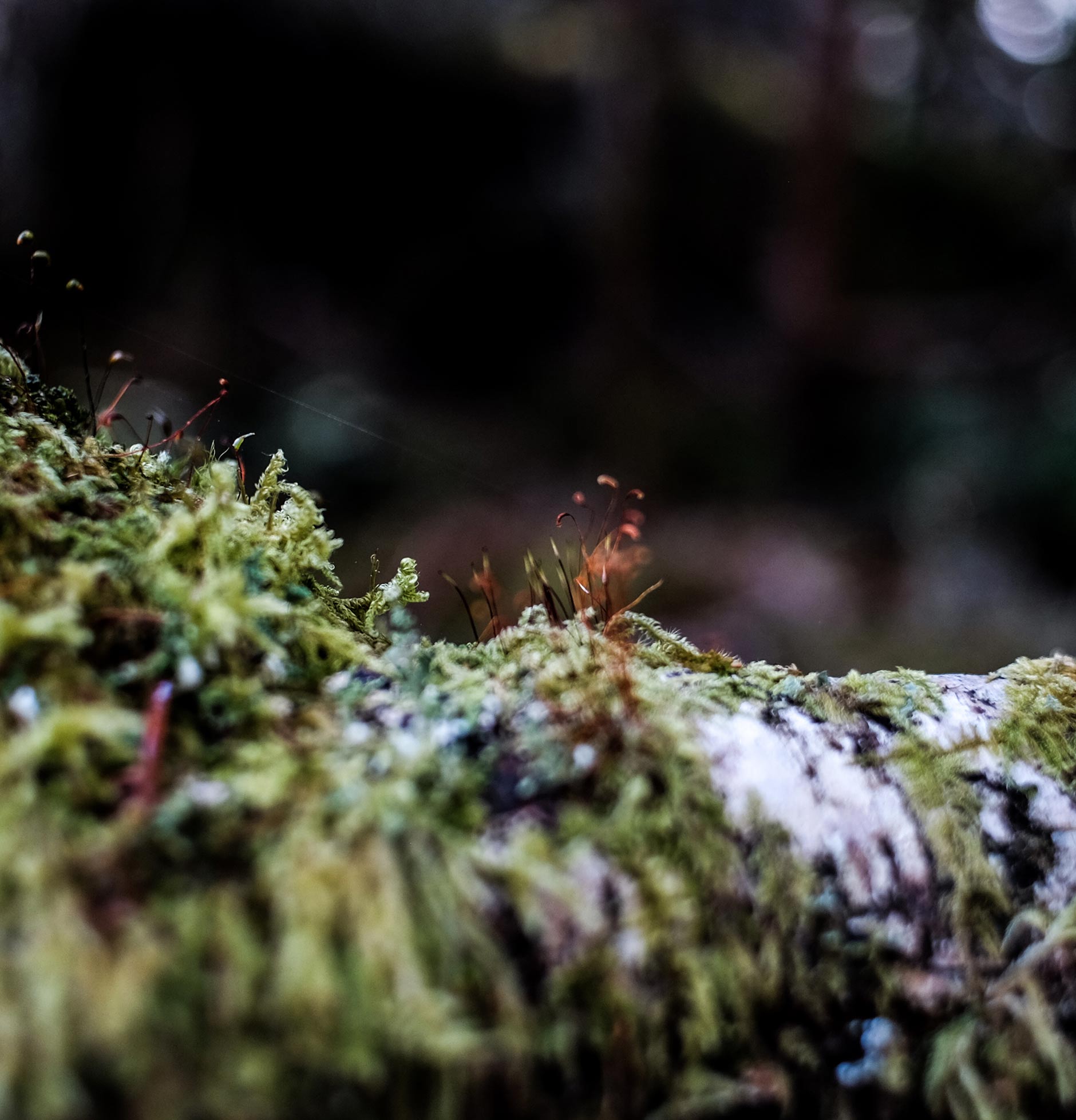
Choen-ji Temple
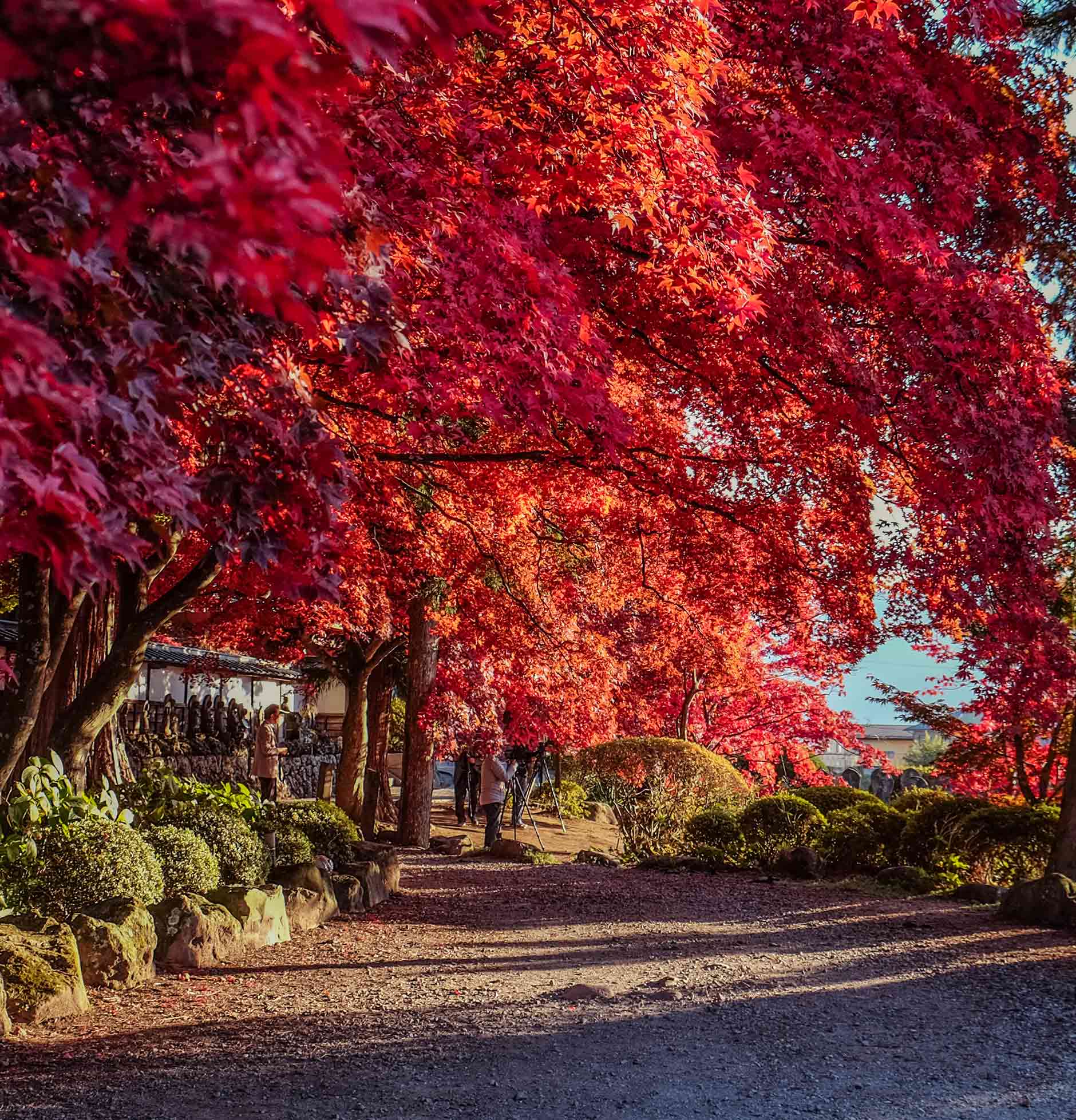
- Get a 1 or 2 day Hop-On Hop-Off Bus Pass to Tateshina, Kirigamine, and Shirakabako
- Get affordable unlimited 4G WiFi for Japan for less than AUD$11
- Enjoy seeing the famous snow monkeys bath in the hot springs at Nagano Snow Monkey Park with this exciting tour.
Need a place to stay in Chino? Search for accommodation using the widget below:
- View the sea of clouds at Kurumayama Shrine during sunrise
- Discover one of the best places to View Mount Fuji
- Explore Japanese mythology at The Spring of the Gods with this Day Guide to Oshino Hakkai



